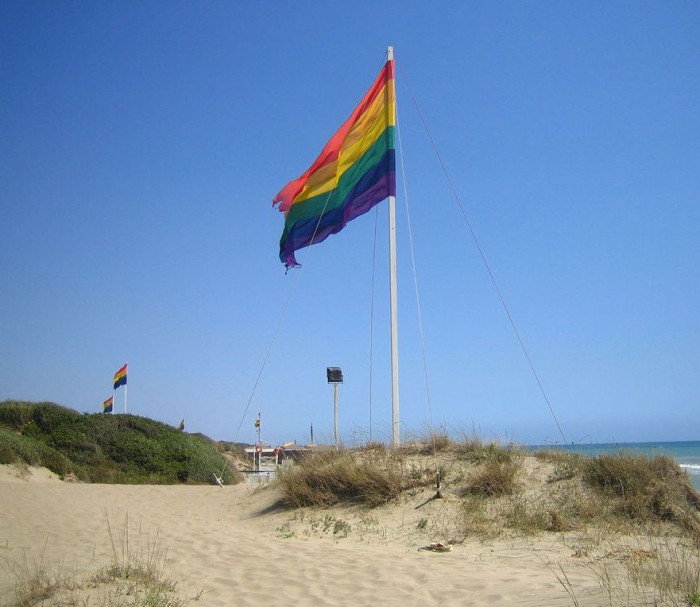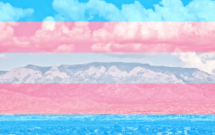
By Counseling Student at Southwestern College
Back in the olden days, when I went to college (in the late 1980s), we talked about sexual orientation, but not gender. For sexual orientation, we had the terms heterosexual, lesbian, gay, and bisexual. The one that fit me best was heterosexual, and that was that; I knew how to describe myself.
Last Friday, I was planning to stop by the Transgender Resource Center of New Mexico (in Albuquerque) to hang out for a couple hours. (Next quarter, I will likely be starting an internship there as part of my M.A. in counseling from Southwestern, and I wanted to get a sense of what the place is like.) Before heading over, I thought to myself, “I’d better get clear about how to describe my own experience of gender, in case anyone asks!”
Am I Transgender?
My first question was, “Am I transgender?” (Since I’m doing an internship at a transgender resource center, it sure would be nice to be able to describe myself as transgender!) But, I thought, what does transgender actually mean? Turning to Wikipedia for some definitions, I found that things have gotten a lot more complex since I went to college. I learned:
-
“Gender is the range of characteristics pertaining to, and differentiating between, masculinity and femininity.”
-
“Transgender is the state of one’s gender identity or gender expression not matching one’s assigned sex.”
-
“Gender identity is a person’s private sense, and subjective experience, of their own gender.”
-
Gender expression is how one expresses one’s gender identity; it’s how one’s gender identity shows up in one’s life. (That’s my own definition.)
-
“Sex assignment is the discernment of sex at the birth of a baby.”
The one thing that’s crystal clear is that my assigned sex is male. So, the answer to the question of whether I am transgender depends on whether my gender identity and gender expression are both masculine. Are they? Well, they are, usually—but not always, and not exclusively. So, am I transgender? Apparently, the answer is: “sometimes” and “sort of”. I imagined introducing myself at the Transgender Resource Center: “Hi, I’m sort of transgender—sometimes.” What a worthless, wishy-washy introduction! Surely, I can do better than that, I thought to myself. I’d like to be able to claim something a bit more solid.
If Not Transgender, Then What?
So, back to the drawing board. I considered a few more terms:
-
“Transsexualism is when . . . a person’s assigned sex at birth conflicts with their psychological gender.” Nope! I like my male body just fine. (Though if I could live in a female body for a week, I’d jump at the chance!)
-
“Androgyny is the combination of masculine and feminine characteristics.” Well, sort of. But not really. I gravitate more toward the ends of the masculine/feminine gender spectrum than the middle.
-
“Bigender . . . describes a tendency to move between feminine and masculine gender-typed behavior depending on context.” Okay, getting closer. I could probably live with this one. But what I’m really looking for is a term that describes my gender identity, rather than my “gender-typed behavior” (or gender expression). My gender expression has changed over time, whereas my gender identity has been fairly consistent over the course of my life.
At this point, I remembered how a friend of mine described herself recently: as a “genderqueer femme.” Looking up genderqueer, I found that:
-
“Genderqueer . . . is a catch-all category for gender identities other than man and woman, thus outside of the gender binary . . .”
-
“The gender binary . . . is the classification of sex and gender into two distinct, opposite and disconnected forms of masculine and feminine.”
Genderqueer vs. Transgender
So, how is the term genderqueer different from transgender? According to the above definitions, transgender implies a mismatch between one’s assigned sex and one’s gender identity or gender expression. Genderqueer, on the other hand, doesn’t have anything to do with one’s assigned sex (i.e. one’s genitalia at birth); it is exclusively about one’s gender identity (i.e. one’s experience of one’s own gender). To call myself genderqueer would simply mean that my experience of my gender is too complex to be adequately captured by either the terms masculine/man or feminine/woman. Now, we’re getting somewhere! (I found an informative article comparing the history and connotations of the terms genderqueer and transgender at nonbinary.org.)
I like the term genderqueer. “Hi, I’m genderqueer.” Something still seems lacking about it, though, when applied to me: genderqueer, by itself, feels a bit too ambiguous. Remembering my friend’s description of herself as a genderqueer femme… how about “I’m a genderqueer butch”? Nope! Scratch that. (Makes me sound lesbian.) How about “I’m a genderqueer man”? I like the ring of that! Mostly accurate, pleasingly countercultural, authentic without being oversharing, and sure to send most people to the internet to do some research on gender. I like that it focuses on gender identity (and doesn’t put me in a box related to gender expression). I think “genderqueer man” is the term for me, for now! (But ask me next week, and this may change!)
I enjoyed my visit to the Transgender Resource Center. (No one asked me about my gender.)
Photo capocotta beach pride flag and sea (by Anthony Majanlahti) is used under a Creative Commons Attribution 2.0 Generic license.
 Southwestern College Santa Fe, NM
Southwestern College Santa Fe, NM





